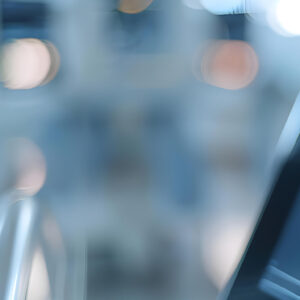Collagen 4-associated intracerebral hemorrhages refer mainly to porencephaly. Porencephaly is a circumscribed intracerebral formation of cavities of varying size that may be bordered by abnormal polymicrogyrized gray matter. The disease typically manifests itself in infancy. The most common symptom is hemiplegic cerebral palsy. Patients often have epilepsy. Since the localization of porencephaly usually coincides with the supply area of a single cerebral artery, an ischemic attack in mid-pregnancy is assumed to be the cause of the lesion.
Most cases are sporadic. Familial porencephaly is very rare and is inherited in an autosomal dominant manner. The penetrance is almost complete, but with high variability in age of manifestation and clinical symptoms, even within the same family. The prevalence is not known, but around 100 families have been described to date.
The more common form of porencephaly, type 1 (POREN1) or encephaloclastic, usually occurs unilaterally and manifests in the form of fetal vascular occlusions. On the other hand, the rarer form of porencephaly, type 2 (POREN2) or schizencephaly, usually occurs symmetrically and represents an arrested development of the cerebral ventricles. Pathogenic variants in the COL4A1 gene are the cause of autosomal dominant porencephaly type 1 (POREN1), but are also the cause of a group of diseases with clinically overlapping symptoms such as schizencephaly, familial vascular leukoencephalopathy, cerebral microangiopathy with hemorrhage, retinal artery tortuosity, hereditary angiopathy-nephropathy-aneurysm-muscle spasm syndrome (HANAC) and Walker-Warburg syndrome. Pathogenic variants in the COL4A2 gene are the cause of autosomal dominant porencephaly type 2 (POREN2).
The COL4A1 and COL4A2 genes encode the α1 and α2 chains of type IV collagen, the main component of the basement membrane. Different tissue- and development-specific expressed isoforms of type IV collagen lead to heterogeneity in basement membrane composition, with an α1α1α2 (IV) trimer being the most prevalent, while α3α4α5 (IV) and α5α5α6 (IV) trimers are more tissue-specific. Most COL4A1 variants described are localized in exons 24 to 49 and involve glycine substitutions within the triple helix of the α1 chain of type IV collagen, disrupting the formation and stability of the α1α1α2 (IV) triple helices. In addition, isolated nonsense variants, frameshift variants, as well as a 13.6 Mb microdeletion and an 8.1 Mb duplication in the chromosome 13q34 region, each of which contains the complete COL4A1 gene, have also been described. COL4A2 variants also predominantly affect glycine substitutions within the triple helix of the α2 chain of type IV collagen.
References
Jeanne et al. 2017, Matrix Biol 57-58:29 / Plaisier and Ronco in: Pagon RA, Adam MP, Ardinger HH, et al., editors. GeneReviews (Updated 2016 Jul 7) / Meuwissen et al. 2015, Genet Med 17:843 / Chassaing et al. 2014, Clin Genet 86:326 / Yoneda et al. 2013, Ann Neurol 73:48 / Verbeek et al. 2012, Eur J Hum Genet 20:844 / Gould et al. 2005, Science 308:1167





















